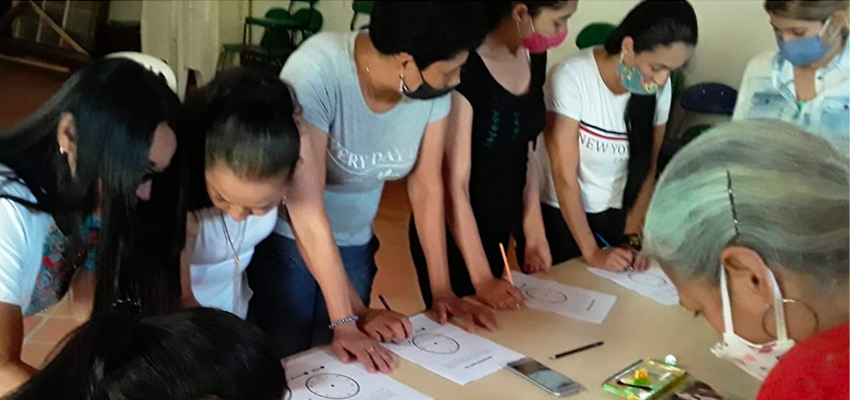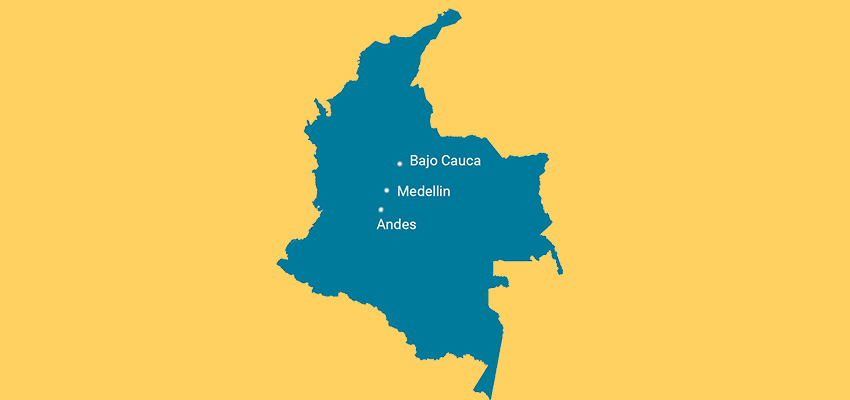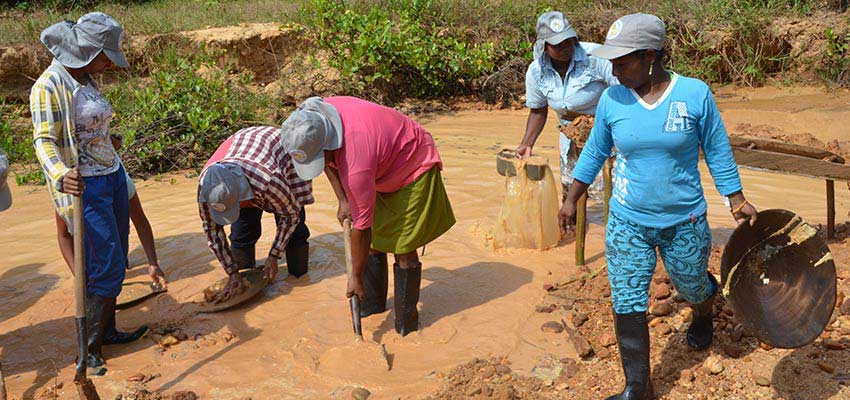
Blog post as originally published on the Alliance for Responsible Mining website
The Alliance for Responsible Mining (ARM) and MIT D-Lab at the Massachusetts Institute of Technology launched the project “RISE: Resilient, Inclusive & Sustainable Environments – A challenge to address gender-based violence in the small-scale mining sector” in June 2020.
Since that time, we have conducted surveys, in-depth interviews, and focus groups with 25 women miners in two regions in Antioquia, Colombia to understand their experiences with gender-based violence (GBV), and, as GBV is often coupled with environmental degradation, ecological destruction in the communities where they live.
The following text spotlights one of the women miners who lives and works in the region of Andes, Antioquia, Colombia. Her testimonial reflects many of the aspects of women miners’ lives that ARM and MIT D-Lab have learned about in the last four weeks as we collected data to inform a program we are now implementing to build women’s mining associations.

Dina Serna, aged thirty-one, is a wife and mother of two sons, eight and eleven years old. She started working in small-scale mining when she was twenty-six. Now, Dina works part-time as a “barequera,” an artisanal miner who pans for gold released in alluvial deposits like streams or river banks, using manual artisanal methods. Dina told us about her life, her thoughts, and observations, which echoed many of the statements that were expressed in the focus groups.
Daily life of female miners – long days & hard work
The day for female miners starts early. They often get up before dawn to cook and prepare food for their husbands, their children, and for themselves. In addition to working as a “barequera,” taking care of the household is expected of female miners. Dina leaves her children at school or with her mother when she goes to work. Thanks to only working part-time, she is able to leave the house at 10 a.m. and come back around 6 p.m. in time to prepare dinner. Once the women are back from work, they usually take a short time to relax before they “attend the house,” as they call it.
The work the women do is physically exhausting. In addition, most of them walk from two to three hours to the locations where they work. Dina rightfully claims, “my knees are suffering.”
Dina, as well as many of the women in the focus group, mentioned that there are no bathrooms at the places where they work. The women explained that when they get their menstrual period – cramps, hormonal issues – it is particularly difficult. Dina explained, “here is no bathroom to clean the intimate area or change clothes when wet from the water.”
Dina told us, “Educating the body or doing what you need to in the bushes is the only option.”

Security & working conditions
Usually, the women go to work with the men. Not so much for their company, but for security reasons. If they go by themselves, it is more likely that something might happen to them.
Dina explained, “I feel insecure because men think that all women are the same and they go too far, especially those who smoke marijuana.”
She went on to say, “when I am with my husband I feel safer, but they bother me anyway right in front of my husband.”
There is one difference between Dina and other female miners. She and her husband are Christian. This is not very common and Dina knows that. She mentions that her husband supports her and even tells her not to work too hard, if possible. There are other cases in which husbands are less helpful and instead belittle their wives or are even violent.
“Exchanging the gold – only together”
When it comes to selling their gold, the female miners try to go with their husbands or a male friend. Both in Andes and in Bajo Cauca women are in agreement that it is far easier to get a good rate if a man handles the negotiation. Since Dina is married, her husband takes care of selling the gold.
Going together with a man also means less risk of getting robbed – not only for Dina, but for all the women we have talked to. Money made from selling gold is for buying food mostly; such things as saving are not on the women’s minds.

Violence & imbalance
Daily domestic violence and violence at work are nothing new and considered normal. Due to the hard work gold mining requires, these women are strong physically and mentally. Even so, we have heard one resignation phrase more than once, “It is what it is.”
Dina tells us that men can be very abusive. She says, there are husbands who beat their wives when they ask for money for household expenses. And further, if they talk about an incident like this, they get beaten again for gossiping. This is the reason why many of the women do not take any action. They depend on the work and the income and would therefore rather stay silent as opposed to, “playing with their food” as they say.
“I like my work, because I don’t like to have to depend on anyone. I like having my things, my children, my house. And even though it’s really hard work and given that women are more delicate and are made for work in the house, I do what I like.”
Because of what we have learned in our efforts to collect data to understand the lives of women artisanal and small-scale miners in Antioquia, Colombia and because of Dina’s generous and frank testimonial, we are more than ever committed to our mission to support and work with women miners to advance their empowerment, to be recognized for their economic role, to support women’s mining associations to mitigate socioeconomic gender-based violence and environmental challenges in Bajo Cauca and Andes, and to create a safe space where women miners are given the opportunity to flourish in every aspect of their lives.
More information
MIT D-Lab Program: Building Inclusive Economy with Small Scale Miners - Colombia
Alliance for Responsible Mining (ARM)
Contact
Libby McDonald, MIT D-Lab Lecturer and Inclusive Regional Economies Program Lead

